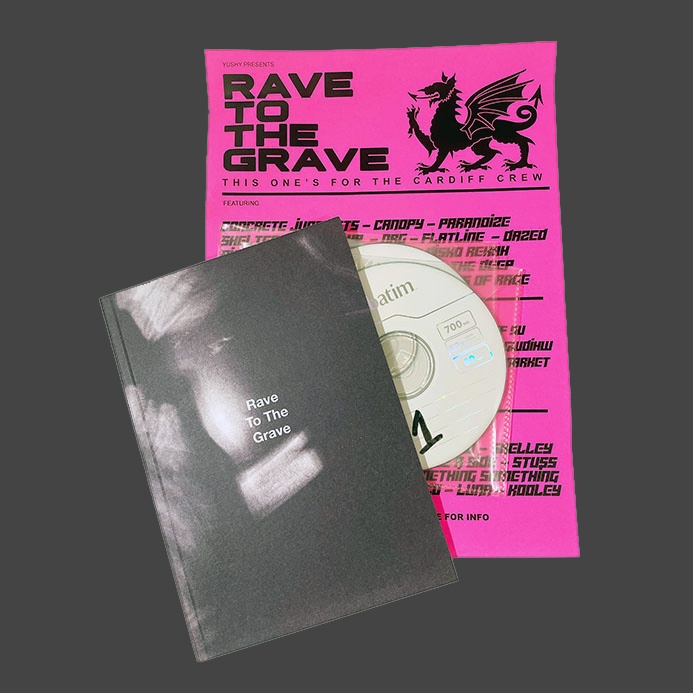
Aiyush Pachnanda
Aiyush Pachnanda got a paid gig to document a local drum 'n' bass rave in Cardiff not quite knowing what to expect and after his mum encouraged him to get a job - he quickly became engrossed. His work builds an intimate portrait of the scene and community he found late at night in old abandoned buildings.
We spoke to him about unexpectedly finding himself at the heart of the Cardiff drum 'n' bass scene and what he hopes people take away from his work; "I kind of want them to wonder why everyone's a bit mental looking." Since moving back to London he has begun to explore the fetish scenes in the city and clubs slowly reopening after a year and a half shut. His work shines a light on the fun we get up to in the dark.
Interview and text by Esta Maffrett | 08.09.21

Did you have any knowledge or idea about the Cardiff nightlife scene before you got into photographing it?
Not at all. My first experience was my first rave. But prior to that, it was freshers week. And that was like, it was the cheesy venues that I kind of got dragged to. I got dragged to a few punk bars and was like this is too weird for me. I never really liked going to a big club, playing pretty peaceful house music. Asking the promoter and getting into my first drum ’n’ bass venue really opened my eyes to how much more there is in music and culture out in Cardiff.
Do you think occupying spaces in the night is important for allowing people to explore themselves in a way they don't throughout the day?
100%. Everyone's a different person when they're away from work when they're away from home. But at night, when you're in a space with people with shared interests, you really get to express yourself in ways that you can't if you're alone. Like if you look at the Berlin club scene, everyone's super free and liberal and that's because everyone wants to explore different ways. And I think the more venues, the more places like that, especially at night in London, in Cardiff, anywhere, the more people can really truly find themselves. Sounds super cheesy.
How do you want people who have never been to a d'n'b night to feel when they see your photographs?
I kind of want them to wonder why everyone's a bit mental looking. Everyone's kind of like ''what the hell is that. Why are people screaming their heads off?'' And it's something to kind of make you think about how people can really lose themselves in these small intimate venues or these empty churches and the more you look at it, the more you realize this is just history repeating itself. It’s culture. Music comes in and people really find this space in it and really forget who they are for an hour or twelve.
When you look back at your photos, do you remember all the nights individually, is there one that sticks out or do they all start to blur together?
There's a few that blur together. But one of my favorite nights I remember to my soul. It really scared me but in the best way possible. It was an event called Undertone and it's literally this underground basement underneath a cocktail bar. So at the cocktail bar everyone's really nicely dressed and then you go underneath and there's like half naked people punching the roof of the venue. But I remember going in and instantly my glasses fogging up, like shit, I'm blind now. There's one massive strobe light where the DJ is and I squeeze my way to that. I was kind of pushed up against the decks with like twelve other people and watching people throw drinks at each other, screaming at the top of their lungs. And I'm thinking to myself 'what am I in? I can't go out? I can't leave. There's too many people here. But I just don't want to leave’. And it's that kind of insanity that really made me stick to it.
'I'm like what the heck it's more than just a guy with like a few pills playing decks. It's a community and it's sacred to the people, people I'm in touch with now, and I'm really good friends with. It's friends and it's family and It's more than that'


Stuck in lockdown and unable to photograph the late night scenes he feels at home in, Aiyush turned to his photographs from Cardiff and created ‘Rave to the Grave’. The name comes from a sign he’d seen at a rave and the photos explore scenes from drum n bass raves taken between the hours of 10PM and 6AM over the course of three years.
This first edition of the soft cover zine comes with a four-hour mix of Cardiffs best DJ’s spread over 4 CD’s and a neon poster listing Aiyush’s favourite venues and nights from his time in Cardiff.
The zine is 92-pages of eco friendly recycled 90 gsm paper.
This one is for the Cardiff crew !










